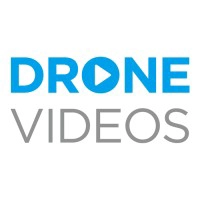Drones are being used in so many areas on a daily basis that it’s getting hard to keep track of their progress. For years now experts have been saying that drone technology will be one of the biggest areas of economic growth, contributing to billions of dollars and thousands of job opportunities. While drones may have started off as military tools, and are still widely used as such, they have claimed a place in fields of agriculture, inspection, mining, search and rescue, policing, scientific research, logistics, entertainment, and so much more. As the world entered a period of crisis due to the outbreak of the coronavirus, drones took on a major role in helping remind people of safety issues, sanitizing public spaces, and delivering medication and small goods.
There is no denying that in the coming months and years we will be seeing drones in even more aspects of our day to day activities. While for the most part drones are used responsibly and for good, there are always exceptions. Finding ways to protect assets from rogue drones has become as important a development as any drone related technology. Echodyne based out of Bellevuellvue, Washington just raised $20million from investors, including Bill Gates, to further a drone detection device. This latest round of funding brings the company up to a total of $64million in funding since it was founded in 2014 by Eben Frankenberg and Tom Driscoll.
Radar is typically used to scan and search for drones, although it is not always accurate. Traditional radar detection systems have to rotate to search an area, and can only scan in one area at a time. This can allow for small and agile drones to easily escape detection. Echodyne has taken traditional radar principles and multiplied it so the device can scan a broader section, almost creating a bubble of detectable space. Rather than using a phased array system to steer a radar beam, Echodyne uses what they call MESA, or Metamaterial Electronically Scanned Array. MESA works by using a mass of finely separated antennas to steer multiple beams at one time, allowing radar detection in more than one spot at a time. It is not a new discovery Frankenberg explains, only a new way of engineering existing knowledge into a lightweight, low energy, cost effective, portable device.
The resulting product is called EchoGuard that weighs less than 3lbs, is smaller than an IPad Mini, and uses less than 50 watts of electricity. The EchoGuard can scan an area that has an elevation of 80 degrees and an arch of 120 degrees wide. With a network of three devices, this would mean 360 degrees of radar coverage at one time. The EchoGuard can detect anything from small manned aircraft to commercial sized drones, all the way down to low flying mini drones. This is a big step in radar detection since small drones that can be used in swarms have been notoriously hard to track. This perfectly positions EchoGuard for use in securities, government, and military applications. And though EchoGuard is less expensive than traditional radar systems, it still costs upwards of $50,000 a unit, outside of a standard private or commercial budget.
Already EchoGuard is being used at high security checkpoints to monitor for drone activity such as the launch pads surrounding NASA Kenedy Space Center and military bases. Frankenberg sees the EchoGuard system becoming highly strategic tools for mobile and permanent military bases, airports, prisons, government buildings, and more. But what just might be the factor that sets Echodyne apart from other radar companies is that it can be scaled down to be attached to drones themselves.
One of the biggest obstacles in the way of drones becoming true everyday tools is the possibility of them crashing into other drones or aircraft, structures, people, or vehicles. For this reason, drones have to be flown within visual line of sight of the operator to ensure collision avoidance. For drone use to proceed to the next level BVLOS (Beyond Visual Line of Sight) flights are needed. With a MESA radar system mounted onto a drone, BVLOS as well as fully automated flights would be possible. The radar system would tell the drone’s onboard computer if an obstacle of any kind is in its path. The radar system would be able to detect obstacles as small as birds and micro drones, allowing a drone to auto correct it’s flight for collision avoidance.
With the ability to not only track the presence of drones broadly but to enable fully automated BVLOS flights, it’s no wonder that investors like Bill Gates and Madrona Ventures Group have chosen to back Echodyne. Clearly drones are becoming the way of the future, there is no way to slow down this progress. But it is vital that this progress is supported by technology that can keep all assets safe at any given time.



